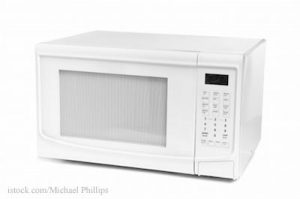When a food label says “ready to cook”, how many consumers know what that means? Is that label different enough from “ready to eat”? Do consumers understand that heating food in the microwave oven may not make it safe to eat? Just the term “convenience food” may be misleading. No matter how much processing a food has gone through, it’s not often ready to eat right out of the package.
 The U.S. Center for Disease Control and Prevention (CDC) has found that some labels on pre-packaged foods can be confusing. For instance, Schreiber’s MealMart Broiled Chicken Livers had instructions that said “for further thermal processing”. In November, the livers were contaminated with Salmonella Heidelberg, and 190 people got sick. The word “Broiled” on the label may have misled consumers into thinking that the livers just needed to be heated, not completely cooked to 165 degrees F.
The U.S. Center for Disease Control and Prevention (CDC) has found that some labels on pre-packaged foods can be confusing. For instance, Schreiber’s MealMart Broiled Chicken Livers had instructions that said “for further thermal processing”. In November, the livers were contaminated with Salmonella Heidelberg, and 190 people got sick. The word “Broiled” on the label may have misled consumers into thinking that the livers just needed to be heated, not completely cooked to 165 degrees F.
Some pre-packaged foods, such as stuffed chicken, may look cooked because they are breaded and pre-browned. But many, if not all, of these products must be thoroughly cooked before eating. The only way to make sure the food has reached a safe temperature is to use a meat thermometer. But studies have shown that most consumers don’t use an instant read thermometer to test their food.
In fact, a 2011 Food and Health Survey by the International Food Information Council, which measured consumer’s attitudes toward food safety, nutrition, and health, found that only 19% of consumers use a thermometer when preparing pre-packaged food.
More startling results from the survey:
- Only 29% of respondents use a food thermometer to check meat and poultry doneness
- 30% of the respondents said that “nothing would encourage them to use a food thermometer”
- 79% of consumers wash their hands with soap and water before handling food
- 71% of consumers wash cutting boards with soap and water
- 61% of consumers follow all of the cooking instructions on pre-packaged food
- 43% let the food stand for an appropriate time after cooking
- Only 46% of consumers know the safe temperature for refrigerator settings (It’s 33 degrees F to 40 degrees F)
Not all foods can be safely cooked in a microwave oven. As Consumer Report’s study on microwave oven heating showed, some microwave ovens have cold spots and hot spots that are so variable some foods just don’t get to safe temperatures no matter how long they’re microwaved.
Some foods such as pot pies, meatloaf, stuffed chicken, or pizza, which aren’t stirred to help distribute heat, can then be dangerous to eat. Frozen convenience foods are just prepared so you don’t have to do any hands-on work in the kitchen, such as chopping, peeling, dicing, or stirring. The food still must be thoroughly cooked.
Some food safety experts say that processed foods that are raw should be labeled “RAW”, not just “ready to cook” or “ready for thermal processing”. If the product is only partially cooked, the label should state clearly that the product should be fully cooked to a certain temperature before eating. Plain English may help prevent food poisoning outbreaks.
The Food Safety and Inspection Service, part of the USDA, launched the “Cook it Safe” campaign in September 2011 to help consumers understand how to safely handle and cook pre-packaged food. You can view Cook it Safe! videos and find additional resources at that site. The campaign lists four steps to safely preparing convenience foods:
- Read and follow package cooking instructions
- Know when to use a microwave oven and when to use a conventional oven
- Know the wattage of your microwave oven, which affects cooking time and temperature
- Use a food thermometer




